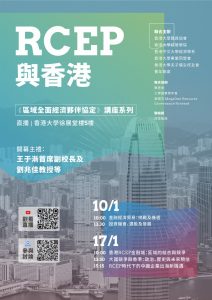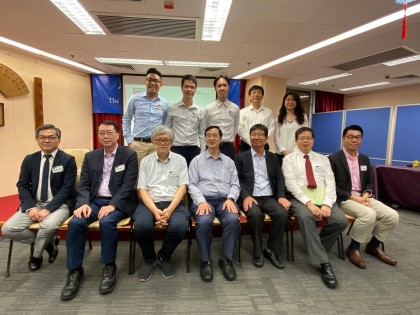香港集思会发表器官捐赠研究报告
港人对「选择退出制」及「家人有最终决定权」呈两极意见
集思会提出一系列建议,致力改善捐赠情况
《新闻稿》
(2015 年 12 月 11 日)
近期发生多宗病人等不及器官移植而离世的个案,令大众关注。截至 2015 年 6 月底,本港有逾 2,400 人正等候器官移植,然而,每年仅得约 50 宗成功捐赠的 个案。
根据国际器官捐赠与移植登记组织(International Registry on Organ Donation and Transplantation, IRODaT)的数字,2014 年本港每一百万人中,仅有 5.4 人于死后 成功捐赠器官。此人数不但远远落后于很多欧美国家,只及西班牙的七分一、美 国的五分一、英国的四分一,和澳洲的三分一,亦较同属亚洲地区的南韩为低, 还连续两年下跌。
现时约有 17 万 9 千港人已于中央器官捐赠登记名册登记;但要在死后成功捐出 器官,捐赠者需要符合脑干死亡、心脏仍然跳动,且没有严重创伤、癌症及传染 病的条件。此外,香港人平均寿命很长,市民离世时体内的器官或因年龄关系, 已无法用作移植。即使死者捐出的器官非常健康,仍需要考虑血型、身型、遗传 因子、病人身体状况等因素。更重要的是,需得到捐赠者家属同意。
香港集思会顾问、前香港人体器官移植委员会副主席汪国成教授便强调:「社会 需要大量的捐赠志愿者,才能增加日后成功配对及移植的机会。」
对「选择退出制」意见两极,不宜贸然更改制度
早前有人建议,为求提升捐赠率,可仿效部分西方国家,将现时市民主动登记的 「选择加入制」(Opt-in),改为预设全民捐赠、但容许日后退出的「选择退出制」 (Opt-out)。
集思会于 2015 年 10 月以电话访问了 1,500 名 15 岁及以上的市民,并与多位持 分者作深入访谈。研究发现,受访者对「选择退出制」的意见颇为两极,「赞成 /非常赞成」的约为 43%,「不赞成/非常不赞成」的则为 34%。
支持者的主要理据是「可以有效增加捐赠人数」(55%)、「可以帮助到有需要的 人」(40%),以及「有权改变决定就没有问题」(20%)。反对者的理由则包括「不 应该假设市民愿意捐赠器官」(46%)、「感觉上是强制捐赠」(36%)、「对不理解 制度的人不公平」(19%),以及「未必懂得处理退出手续」(12%)。
由于社会对「选择退出制」未有共识,该研究认为不宜贸然更改制度,以免制造 矛盾,适得其反。
「选择退出制」需其他配套及社会条件配合
集思会是项研究涵括了不少海外案例,综观国际经验,「选择退出制」还需其他 条件配合,例如有效管理器官捐赠的架构及机制、足够的医疗设施及人手、成熟 的器官捐赠文化等,政府及医疗机构亦要得到市民信任。若未有所需配套及环 境,可能会像新加坡一样,实施「选择退出制」后捐赠率仍毫无起色;甚至重蹈 巴西在 1997 年的覆辙,大量市民一起退出机制,令制度在第二年便遭废止。
对「家属决定权」未有共识
目前香港捐赠制度另一具争议性之处,是不管死者生前的意愿如何,直系亲属拥 有捐赠的最终决定权。据医院管理局的统计,平均有四至五成家属会拒绝捐出死 者的器官。
集思会的调查发现,有 38%受访者赞成保留家属的最终决定权,不赞成的则有 36%,两者比例相若。其中 60 岁以上的长者倾向两极化,赞成及反对的比率同 样超过四成;年纪较轻的受访者,对这个决定权相对没有太大意见,以 15-19 岁 为例,表示「没所谓」的比率高达 55%。
认为 18 岁可为自己作出捐赠决定
此外,最多受访者认同一个人 18 岁时,便有独立能力决定死后是否捐出自己的 器官,其次为 21 岁。当中年纪愈轻的受访者,愈倾向认为 18 岁已可作出这项重要决定。
普遍认同捐赠意义,参与计划者却属少数
值得关注的是,虽然逾八成受访者认为死后捐出器官有意义/极有意义,但当被 问到是否愿意在死后捐出个人器官时,很多人却有保留,约有 43%受访者表示愿 意,18%不愿意,「未决定」的近四成;政府应以这批「游离分子」为主要的推 广目标。
调查又发现,在表示愿意捐赠器官的受访者中,尚未登记的高达 74%;而在未有 登记的受访者中,近八成表示不知道在哪里进行登记。大部分受访者认为香港对 遗体器官捐赠的宣传、提供的信息并不足够/非常不足够。
传统观念要「留全尸」,部分人不清楚家人意愿
不愿意参与捐赠计划的受访者的主要顾虑是「觉得死后要保留全尸」(32%)、「害 怕/有恐惧感」(30%)及「自己年纪大,没有合适器官可以捐赠」(25%)。不赞 成家人死后捐出器官的受访者,意见大致相同。
若家人要在死后捐出器官,超过四成受访者表示赞成,13%不赞成,觉得「没所 谓」和「不肯定/不知道」的各占两成多。事实上,当被问及有没有家人已登记 成为器官捐赠者时,近两成人回答「不知道」。
现行机制未尽完善,容易错过潜在捐赠者
综合各受访者的意见,目前器官捐赠登记的程序及系统设计落后,对市民来说并 不方便,亟待改善;而公立医院因资源和设施不足,特别是深切治疗部的病床短 缺,医护人员(如器官移植联络主任、深切治疗部员工)的工作过于繁重,又没 有专责部门统筹和管理相关事宜,容易错过潜在的捐赠者,流失部分有用的器官。
政策建议:
增加参与计划的有效渠道,鼓励市民积极登记
鉴于大部分受访者(包括年青人)认为一个人到达 18 岁便有独立能力为自己作 出捐赠决定,研究建议政府在市民领取成人身分证时,提供有关器官捐赠的信息 及表格,表格提供「参加」、「不参加」及「未决定」三个自由选项,规定所有申 请者必须填写递交;有关措施亦可于市民申请永久性居民身分证时实施。
「此举一方面可增加参与计划的有效渠道,另一方面可提供合适机会,让申请人 思考自己的公民责任,意义重大。」香港集思会总裁黎黄霭玲说。
改善登记系统,提升计划形象,加强教育宣传
为了吸纳更多市民参与捐赠计划,研究建议改善现有的登记系统,与医疗病历互 通;鼓励市民尽早向亲友表明意愿;提升捐赠计划形象,善用纪念花园向捐赠者 表达敬意;为捐赠者设立特别撒灰区,加强对死者家属的支持;深入小区解答公 众疑难,凝聚不同界别支持;善用中学的通识教育平台,推动生命及死亡教育。
重整器官捐赠的行政架构,增加资源及培训,作出长远规划
研究亦建议政府重整器官捐赠的行政架构,改善相关配套及设施,包括:于医院 管理局设立专责部门,统筹器官捐赠工作;为医护人员提供培训,尽早发掘潜在 捐赠者;于深切治疗部增设器官捐赠者病床,为临终病人提供适切照顾,维持他 们体内各器官的良好状态;定期发布器官捐赠及移植的数据,让公众掌握器官捐 赠的现况及变化;订立长远目标及计划,整合及协调各界资源。
研究又建议政府作出长远检讨,当上述政策未见成效,可考虑其他方案的可行 性,包括取消直系亲属的否决权、实行「选择退出制」等。
详细研究报告及建议请参阅香港集思会网站 http://www.ideascentre.hk。
研究方法
香港集思会委托政策二十一有限公司,以随机抽样电话访问形式,于 2015 年 10 月访问了 1,500 名 15 岁及以上的香港市民,了解他们对器官捐赠的态度及相关 问题的看法;并与多位医护界人士、学者、病人组织代表、捐赠者家属等持分者 作深入访谈;同时参考世界各地的器官捐赠政策和经验。研究报告题为《香港遗 体器官捐赠初探》,于 2015 年 12 月 11 日发表。
研究团队
汪国成教授 香港集思会顾问、前香港人体器官移植委员会副主席
黎黄霭玲女士 香港集思会总裁、前香港贸易发展局副总裁及总经济师
唐希文女士 香港集思会高级研究主任,曾任职香港特区政府中央政策组研究 主任
余婉华女士 香港集思会高级研究主任,曾任职于香港特区政府统计处
香港集思会简介
以「齐思考、创未来」为座右铭,香港集思会是一家独立、无政治背景、非牟利 的民间智库,由一群热爱香港人士于 2008 年创立,专门发掘、搜集和研究对香 港经济及社会发展富建设性和具创意的建议,给政府、有关人士和公众参考。
透过集思广益,香港集思会的研究工作有三大范畴:一、增加香港的竞争能力; 二、促进香港经济及社会持续发展;及三、提升市民的生活质素。
传媒查询: Yvonne KWOK 电话: 2114 1488/9322 4639
 ()
() 
